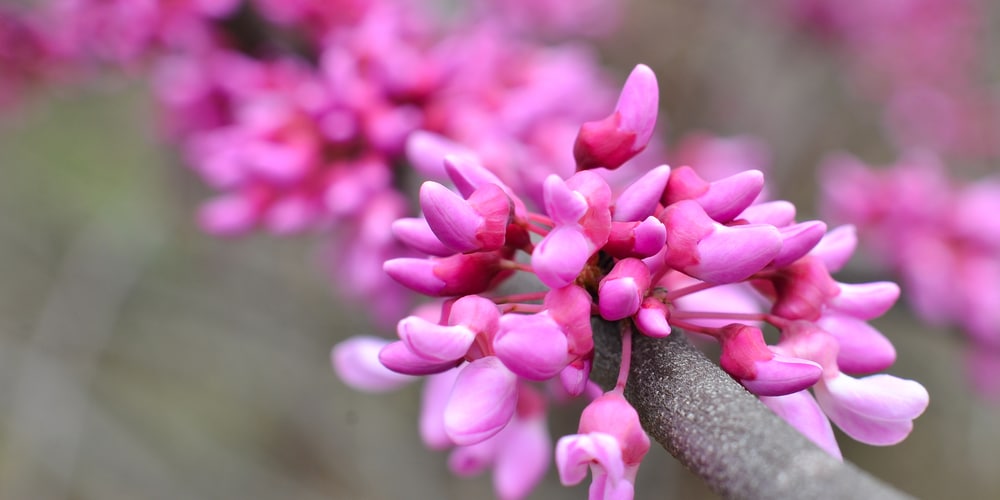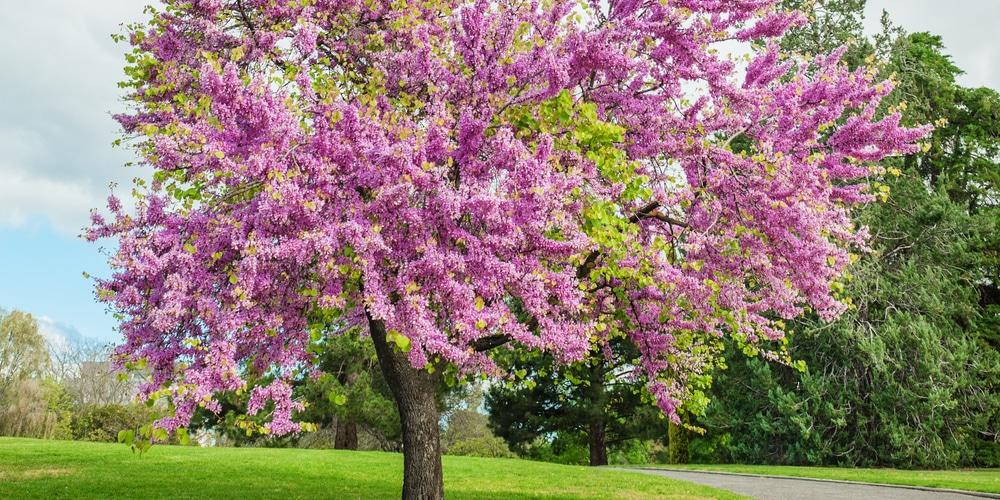The Redbud Tree, also known as the Judas Tree, is a small ornamental tree native to the southern states and common in Florida. This tree species remains relatively small and can grow six to ten feet. It has clusters of pink flowers in the spring and summer and green heart-shaped foliage that turn bright red and pink shades before falling off in the winter.
The redbud tree is a popular choice for landscaping in Florida, as it is drought-tolerant and can withstand hot temperatures. It also looks beautiful year-round. Let’s look at growing and caring for a Redbud Tree in Florida.
Redbud Trees do Well in FL

The redbud tree is part of the Caesalpiniaceae family and grows well in warm locations. If you live in USDA zones 8 to 11, you may like to grow this beautiful ornamental tree in your yard. There are seven different varieties of Redbud trees, all with slightly different characteristics.
The flowers of the Redbud Tree are small and pink, and they bloom in the early spring. The Redbud Tree produces decorative seed pods later in the year, which are a source of food for many wildlife species, including deer and birds. This plant will also attract pollinators such as bees and butterflies to your yard.
Redbud Tree Florida care tips

The Redbud Tree prefers moist, well-drained soil and full sunlight or partial shade. It is a drought-tolerant species that can withstand hot temperatures, making it a popular choice for landscaping in Florida. Here are some tips to help you grow and care for a thriving redbud tree in Florida:
Soil Type
The redbud tree prefers soil that’s well-drained as it can suffer from root rot if the soil becomes waterlogged, this isn’t usually a problem in Florida.
Sun Exposure
Plant your redbud tree in the full sun or partial sun. These plants require at least six to eight hours of direct sunlight a day to thrive.
Pest and disease
In Florida, the Redbud tree is not susceptible to any major pests or diseases. It is resistant to drought and hot temperatures, making it ideal for landscaping. There are, however, a few pests and diseases to watch out for.
The most common problem of the Redbud Tree is the aphid. These tiny insects can be identified by their black or green color, and they often congregate on the underside of leaves. Aphids can damage plants by sucking sap from the leaves, and they can also transmit diseases. If you notice an aphid infestation, you can treat it with horticultural oil or insecticidal soap.
Propagation
The Redbud Tree can be propagated by seed or cuttings. Seeds should be planted in the fall, and cuttings should be taken in the spring or early summer.
Fertilization
The Redbud Tree is a low-maintenance plant that does not require much care. It can be fertilized twice a year with a balanced fertilizer. Alternatively, you can add some organic mulch or manure around the tree’s base to improve soil quality.
Pruning
Pruning is not necessary but can be done if desired. Florida is a great climate for redbud trees, so even if you over-prune it, it’ll grow back.
Temperature
The tree can be harmed by ice and snow, so it is best to protect it during these weather events.
Conclusion: Redbud Trees are Great for FL
The Redbud Tree is a beautiful addition to any landscape and is a popular choice for Florida homeowners. It is drought-tolerant and can withstand hot temperatures, making it a perfect choice for the Sunshine State.
Related: When to plant tomatoes in FL